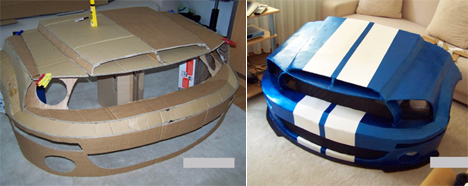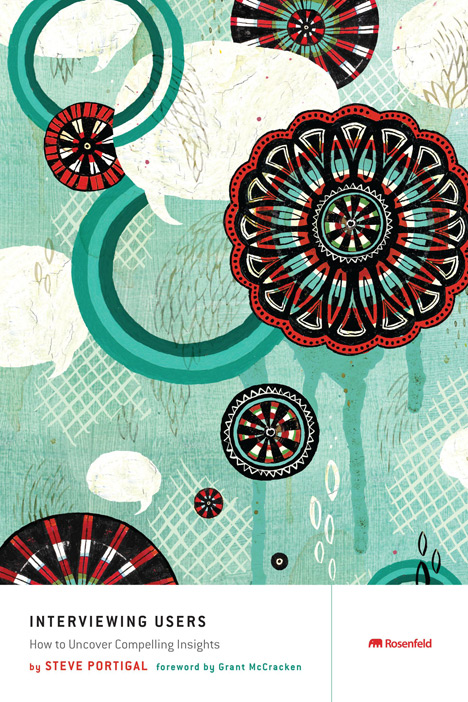![]()
Industrial design is like surgery, auto racing or a military operation in that things can go horribly wrong. And they often do, although no one really talks about it. In this new section for Core77, we'll take stories from working industrial designers—namely, our readers—willing to recount some of the humorous, maddening or just plain stupid things that have happened to them on the job. While the stories you'll read here are true, companies, clients, and of course designers are all anonymized to protect the innocent.
Got a "True I.D. Story" yourself? Find out down at the bottom of this entry how you can talk to one of our editors and win yourself a $25 gift certificate to Hand-Eye Supply.
First up: "NewbieDesigner" tells us about his/her first on-the-job I.D. disaster.
* * *
As a freshly-minted Bachelor of Industrial Design, some years ago I landed my first job at an exhibition design firm. It was a small operation, just eight people, but very successful due to the patronage of major corporate clients like [Telecom Operator] and [Consumer Products Manufacturer]. We did everything for them environments-related: Exhibits for tradeshows, signage, retail environments, even custom executive offices and residences for some of the corporate bigwigs.
I had to share an office with a junior designer, I'll call him JD. Nice enough guy but I couldn't stand him—he was the kind of guy who said accidentally racist or idiotic things, like the time the office ordered Chinese takeout and I started eating it with the provided chopsticks. (I'm Asian-American.) JD commented that chopsticks were stupid, from a design standpoint—fair enough, that's his opinion—then went on to say that anyone living in America shouldn't be using chopsticks no matter what kind of food they were eating. I told him my parents use chopsticks, and he said "Yeah but I mean American people." (Both of my parents are U.S. citizens.)
Anyway...
The Assignment
Occasionally I'd have the office we shared to myself, as JD would be sent away to oversee one project or another. Those days were heaven. But I'd only been at the job a couple of months when they said I'd be going away, too; they were going to fly me to [U.S. City] to oversee a retail installation. Ordinarily JD would do it, but he was busy with another job, and while they wouldn't normally send someone as green as me, there was no one else free.
It was a straightforward operation: my job was simply to see that the store display matched up with the Guide Booklet. It all sounded easy-peasy.
My boss, who was a super-nice guy—I couldn't understand how he'd hired JD—told me the job would be simple: I was to fly out to [Consumer Products Manufacturer's] flagship store in [U.S. City] and after they closed at 6pm, I was to oversee the installation of the new retail display system our firm had designed. It was a straightforward operation: We had these Master Display Guide Booklets printed up that showed you where each product was to be displayed within the system, and my job was simply to see that the store display matched up with the Guide Booklet. (To give you an idea of how long ago this was, we did all of the Guide Booklets in Quark Xpress.) It all sounded easy-peasy.
I was to spend the night there at a swanky hotel, and the next morning I'd head to the store before they opened to meet one of the corporate bigwigs, a VP of something or other, to show him what we'd done. This job was my first introduction to corporate stuff, and I knew this guy was important because people used both his first and last name. What I mean by that is, we had a lot of meetings at our corporate clients' headquarters, and people were always introduced by name and department, like "This is Janice from Marketing" or "You'll need to talk to Tony from Operations." But when it was someone important, it was always "You'll be meeting with [First-Name Last-Name.]"
I was excited and a little nervous. I'd never been to [U.S City] and was looking forward to seeing it. (This was before I realized a business trip means you get to see the airport, the hotel and the workspace.)
The Mission
My flight landed on time, and I checked into the hotel without event. The store was directly across the street from the hotel—so much for seeing [U.S. City]—and I headed over to the store at 6:01pm to meet with the manager.
The center of the store was filled with crates. Our new display system had been delivered, and we started unpacking them all as the installers arrived. I should explain what the display system consisted of. This store had an entire wall comprised of painted concrete, and a grid of holes had been drilled into it, with the holes then lined with metal sleeves of which only a neat, stainless steel ring was visible. It was pretty cool-looking, and the store had done this so that wall-mounted displays could be swapped out at will; it was just a matter of designing racks, shelving or hanging cabinetry with metal tubing protruding from the back, at intervals that aligned with the grid system. You could just plug and unplug whatever unit you needed into the wall.
For this company's new line of products, our firm had designed a series of stainless steel racks comprised of square tubing welded together, and with circular support rods that would fit into the holes welded to the back. We had carefully designed these racks to fit every current product that our client wanted to display, and there was a lot of product.
The Design Fail
Going through my Guide Booklet, I located the first rack unit to be installed. The installers got up on ladders to plug it into the wall. "Hey," one of them said, "we've got a problem." I went over to inspect. The tubing protrusions did not line up with the grid, so there was no way to get it into the wall. The manager looked concerned.
(more...)![]()
![]()
![]()
![]()












 Clockwise from top: Anne Frank, Kaler Abdolah, Vincent Van Gogh
Clockwise from top: Anne Frank, Kaler Abdolah, Vincent Van Gogh













 Figure 1 - Capture everything that everyone thinks they know so that it's not stuck in their heads. Portigal, Steve. 2013. Interviewing Users. New York: Rosenfeld Media.
Figure 1 - Capture everything that everyone thinks they know so that it's not stuck in their heads. Portigal, Steve. 2013. Interviewing Users. New York: Rosenfeld Media.  Figure 2 - Transitional rituals are actions we take to remind ourselves that we are shifting from one mode of being to another. Portigal, Steve. 2013. Interviewing Users. New York: Rosenfeld Media.
Figure 2 - Transitional rituals are actions we take to remind ourselves that we are shifting from one mode of being to another. Portigal, Steve. 2013. Interviewing Users. New York: Rosenfeld Media. 













 Marius Kyking × Vidar Koksvik
Marius Kyking × Vidar Koksvik Ladies and Gentlemen × Nicholas Nyland
Ladies and Gentlemen × Nicholas Nyland
 Egg Collective × Hangar
Egg Collective × Hangar Egg Collective × Hangar
Egg Collective × Hangar


 Clockwork from top right: Matt Shaw, Tiffany Lambert, Brigette Brown, Cecilia Fagel, Bryn Smith
Clockwork from top right: Matt Shaw, Tiffany Lambert, Brigette Brown, Cecilia Fagel, Bryn Smith


























